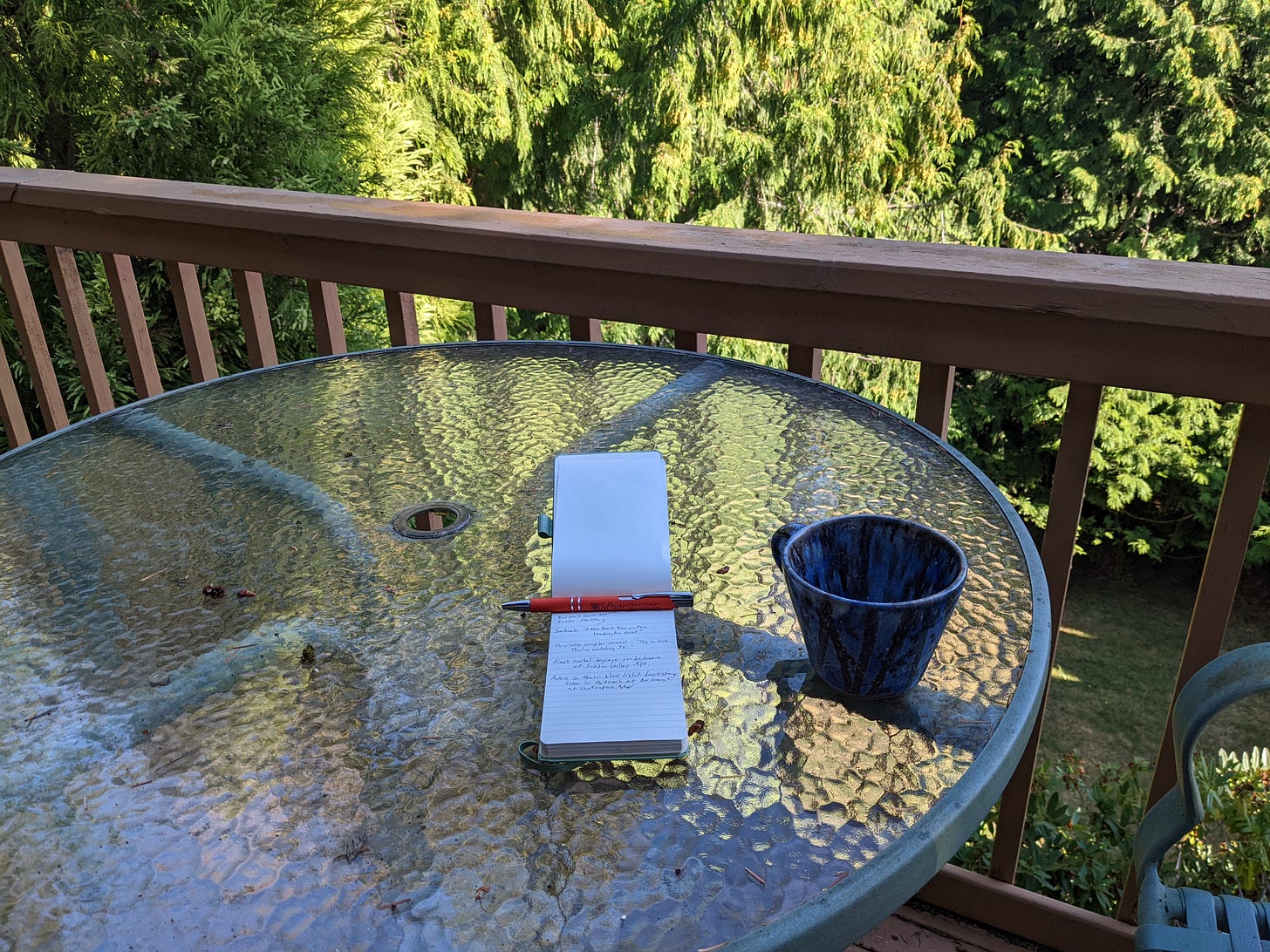Technique Tuesday #5: On Dialogue, Pt.2 (A Gaming Module)
Tricks, Templates, & Tools
I’m going to leave the intro from TT #1 pinned here for new readers. For today’s new post, scroll down below the photo:
These should be fairly self-explanatory. They’re not formulas or, God knows, rules. They’re exercises to try, and ways of framing, and maybe challenges that will lead you to solutions to the individual problems your writing projects are already plotting to hurl at you. All of these are things I’ve developed (or borrowed and augmented) over the last quarter-century, and that at least some people have found useful.
If you find these helpful, and want to show appreciation or encouragement, please do tell friends, or say so somewhere. And/or click the little purple button below, if you’re able and so inclined. Many thanks.
October Tuesdays will be all ghost story techniques. But for today:
In Tech-Tues #4, I introduced my theory of cross-purpose dialogue— meaning conversation in which the principals rarely say what they mean and always have other things on their minds— as the key not just to getting spoken exchanges to read credibly but to injecting them with flavor, emotion, misunderstanding, humor, degrees of intensity, all the things that make talking to other humans so exasperating. And hilarious. And essential.
Then I helpfully told you that I didn’t have a secret tactic or cleverly generated technique for mastering this. That getting dialogue right is mostly an ear thing.
Thanks, Glen, I hear you saying. In a tone I’m pretty sure I’m parsing correctly.
Pass the salt, smart-aleck Glen resists answering. Even though it would be an example of what I’m talking about. But I’m very much hoping you’ll want to come back here, and that you’ll find something helpful when you do.
And besides…while I don’t have a guaranteed tactic or a trick that always works…I have a game. Want to play?
It goes like this:
Here’s the first line of a scene between two characters that you’re going to write:
“It’s better if you _______. Try not to _______.”
Here are the rules:
Figure out who’s talking, and where they are. Don’t write any of that down. But know it. For purposes of practice, people you actually know and places you’ve been might work best.
Once you know, fill in the blanks. Obviously, the words you put there will suggest a tonal palette for the ensuing conversation.
Now, write a scene that stays true to that tonal palette. But you can only use dialogue. No description. No “Julio said”. The goal is to get as much emotional layering, movement, sense of place, and character delineation as possible into the exchange.
Now, the game bit:
Before every line of dialogue, roll a 20-sided die (or trigger a random number generator, if your gaming supplies are sorely lacking) and consult the chart below. Use the result to dictate the direction and/or content and or/tenor of the next comment. In other words, depending on your roll, your next speaker’s line should be about:
1— Something about the physical environment where they are
2— The essential thing being discussed
3— A reference to something both of these characters know
4— A comment on the other character’s current appearance
5— The essential thing being discussed
6— A reference to time, or the time this is taking
7— A sung line of song
8— A comment about how the speaker feels historically about the other person
9— A comment about how the speaker feels currently about the other person
10— The essential thing being discussed
11— Something about work
12— Something about work
13— Something about work
14— Something about the physical environment
15— An expression of how the speaker wants to feel when this is over
16— An expression of how the speaker wants the other person to feel when this is over
17— Something about food
18— The essential thing being discussed
19— Asking after someone else
20— The essential thing being discussed
As you’ll see, probability suggests that the characters will actually touch on or advance the core topic around 25% of the time. Or just slightly more than they touch on their work lives.
Try to inject every line with feelings that are true to this moment for each character, even if he/she/they isn’t discussing what they should be.
Feel free, once you feel like you are in fact hearing these voices (hey, maybe Hirshberg wasn’t just f-ing with us…), to stop rolling and just let the conversation rip.
Bring the scene to resolution.
Then…try the whole thing again, with the same characters, but with entirely different words filling in the blanks that change the emotional connotation of the exchange. (For example, start with a try not to scream scene, then attempt a try not to laugh sequence). Same characters. Same place. But rom-com instead of horror film? The possibilities are endless.
As with so many other things in life…we do so much better when we just let each other talk…

